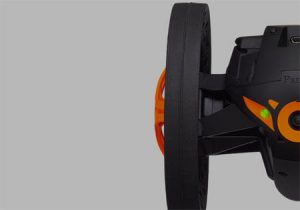In the rapidly evolving landscape of unmanned vehicles, the need for efficient mission planning has become paramount. With advancements in technology, the demand for swift and effective deployment of drones – whether for industrial, military, or emergency operations – continues to rise. Rafael Frisch from HawAItech sheds light on the innovative approaches being developed to enhance the efficiency of unmanned vehicle operations, particularly in mission planning.
Efficient Unmanned Vehicle Mission Planning
At the core of HawAItech’s mission is the recognition that traditional drone operations often involve cumbersome preparation processes. Currently, a pilot must invest significant time in preparing a mission, which includes inputting numerous waypoints and planning the trajectory of the vehicle. This time-consuming process is especially pronounced when multiple drones are involved, as the complexity and time required multiply. For instance, if a mission requires the deployment of ten drones, the planning time could increase tenfold, leading to delays in response and operational effectiveness.
To address these challenges, HawAItech has developed a solution that leverages artificial intelligence (AI) to streamline mission planning. The company’s innovative tool allows operators to describe mission parameters in high-level layers rather than specifying each waypoint individually. This approach not only simplifies the planning process but also significantly reduces the time required to get drones airborne. By fusing various information layers and adjusting their weights, the AI algorithms can generate optimal trajectories for each drone in real time, enabling instant takeoff and enhancing operational efficiency.
Aereal, Terrestrial, and Underwater Adds Efficiency
The versatility of HawAItech’s technology is noteworthy. It is designed to support various types of unmanned vehicles, including aerial, terrestrial, and underwater drones. This broad applicability means that the benefits of efficient mission planning extend beyond emergency responses and military applications to encompass industrial operations, such as gas leak detection. In scenarios where time is of the essence-such as responding to environmental hazards-the ability to deploy drones swiftly can be critical.
Moreover, the transition from man-operated to autonomous drones is an inevitable progression in the industry. While current operations may still involve human oversight, the goal is to develop fully autonomous systems capable of making real-time decisions without human intervention. HawAItech is at the forefront of this transition, focusing not only on the autonomy of the drones themselves but also on enhancing the AI capabilities at the ground station to facilitate seamless mission preparation.
The implications of efficient unmanned vehicle mission planning are profound. For military applications, the ability to deploy drones quickly can enhance situational awareness and operational effectiveness. In industrial contexts, it can lead to faster response times and improved safety outcomes. The technology developed by HawAItech exemplifies the potential for innovation to transform how unmanned vehicles are utilized across various sectors.
Conclusion: An Unmanned Future of Safe Drones
In conclusion, as the demand for unmanned vehicles continues to grow, the importance of efficient mission planning cannot be overstated. HawAItech’s advancements in AI-driven mission preparation represent a significant leap forward, enabling faster, more effective drone operations. By simplifying the planning process and paving the way for greater autonomy, the company is not only improving the efficiency of drone missions but also setting the stage for the future of unmanned vehicle technology. As we look ahead, it is clear that the integration of intelligent systems in mission planning will play a crucial role in unlocking the full potential of unmanned vehicles in diverse applications.
Interview by Don Baine, The Gadget Professor.
Get $5 to protect your credit card information online with Privacy.
Amazon Prime gives you more than just free shipping. Get free music, TV shows, movies, videogames and more.
The most flexible tools for podcasting. Get a 30 day free trial of storage and statistics.
Podcast: Play in new window | Download
Subscribe: Apple Podcasts | RSS | More

 In recent years, drone technology has emerged as a game-changer across various industries, and the healthcare sector is no exception. Among the pioneers in this field are
In recent years, drone technology has emerged as a game-changer across various industries, and the healthcare sector is no exception. Among the pioneers in this field are  For decades, we’ve been promised flying cars. In The Jetsons, we were told that flying cars were not new and had been around for years. But, the show takes place in 2062 – only 40 years from now. So, where are the flying cars? We’ve seen a few at CES in the past few years, but
For decades, we’ve been promised flying cars. In The Jetsons, we were told that flying cars were not new and had been around for years. But, the show takes place in 2062 – only 40 years from now. So, where are the flying cars? We’ve seen a few at CES in the past few years, but  Kostiantyn Borysov is the creator of
Kostiantyn Borysov is the creator of 




 There are some products that are shown at
There are some products that are shown at